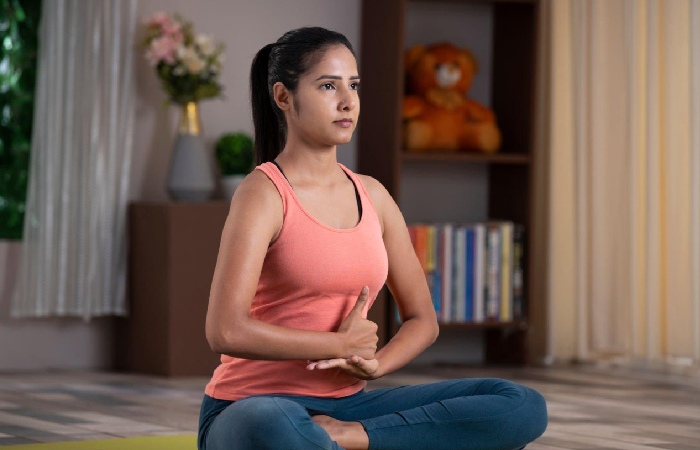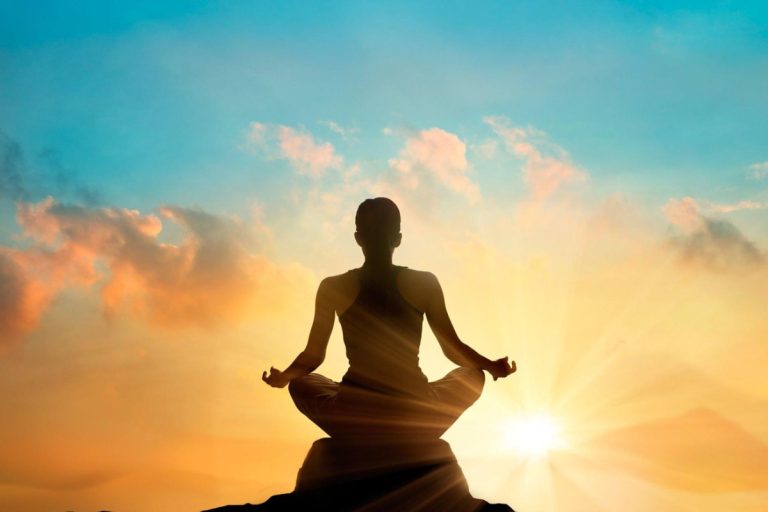Table of Contents
Definition
Yoga is a mind and body practice. Numerous styles of yoga combine physical postures, breathing methods, and meditation or relaxation. It is an ancient Indian exercise that promotes balance between mind and body, offering numerous health benefits. With the proper guidance, it can be done anywhere and by everyone, promoting cerebral and physical well-being. With the appropriate direction, regular yoga sessions can be beneficial.
There are numerous types of yoga and many chastisements within the practice.
What is Yoga?
Yoga is an ancient practice that involves bodily poses, attention, and deep breathing.
A steady yoga practice can promote trusted Source stamina, forte, calmness, flexibility, and well-being.
Yoga is now a popular form of workout around the world. I am rendering to a 2017 national survey, one in seven grownups in the United States practiced yoga in the past 12 months.
History
The word “yoga” primarily appears in Rig Veda, a collection of ancient texts. It originates from the Sanskrit word “Yuj,” which means “union” or “to join.”
Yoga can be drawn back to northern India over 5,000 years ago.
Indian monastics banquet their knowledge of it in the West during the late 1890s. Modern yoga wisdom became widely general in Western countries by the 1970s.
Philosophy of Yoga
The overall philosophy of yoga is about joining the mind, body, and spirit.
There are six branches of it. Each chapter represents a different focus and set of characteristics.
The six branches are:
-
Hatha
It is the physical and mental branch that aims to prime the body and mind.
-
Raja
This involves meditation and strict adherence to a series of disciplinary steps known as the eight limbs of yoga.
-
Karma
It is a path of service that aims to create a future free from negativity and selfishness.
-
Bhakti
Main aims to establish devotion, a positive way to channel emotions and cultivate acceptance and tolerance.
-
Tantra
It is the pathway of ritual, ceremony, or consummation of a relationship.
-
Chakras
The term “chakra” means “spinning wheel.”
It upholds that chakras are center points of energy, thoughts, feelings, and the physical body. According to yogic teachers, chakras control how people experience reality through emotional reactions, desires or hatreds, levels of confidence or fear, and even physical symptoms and effects.
When vigor becomes blocked in a chakra, it activates bodily, mental, or emotional imbalances that manifest in indications such as anxiety, lethargy, or poor digestion.
Asanas are the many bodily poses in Hatha yoga—people who practice yoga use asanas to free energy and stimulate an imbalanced chakra.
-
Vishuddha
The throat chakra corresponds to immunity and spoken communication.
-
Anahata
The heart chakra is the center of the chest that inspirations professional and personal relationships. Any inequities in this chakra will affect oxygen, hormones, tissue, and organ control.
-
Manipura
The solar plexus chakra is in the abdominal area. It agrees with self-confidence, wisdom, and self-discipline.
The sacral chakra, which is underneath the belly button, connects pleasure, well-being, and vitality.
Advantages Of Yoga

Decreases Stress And Anxiety
It can help reduce stress and anxiety, negatively impacting individuals’ quality of life. According to Specialist, It can even prevent mental disorders like depression by promoting well-being by releasing neurotransmitters like dopamine, endorphin, and serotonin.
Fights Inflammation
Yoga helps combat inflammation, which can be caused by various sources such as food, chemical compounds, environment, and stress. Physical activities can help mitigate pain and discomfort caused by inflammation, thereby enhancing overall health.
Controls Blood Pressure And Heart Rate
It can be an integrative therapy that helps control heart diseases and high blood pressure. It optimizes blood circulation, improving cardiac functioning and blood pressure regulation. Possible due to the benefits of yoga for stress management, making it a valuable addition to medical treatments for heart diseases and high blood pressure.
Improve Physical Conditioning
It can improve physical conditioning, making it beneficial for those who engage in other forms of exercise, like gym workouts. It aids in muscle strengthening and breathing, promoting a more balanced health. This practice is particularly beneficial for sedentary individuals who haven’t exercised for a long time.
Types Of Yoga
Modern yoga attentions to exercise, strength, agility, and living. It can help trusted Sources boost physical and mental well-being.
There are many styles of them. A person should choose a type based on their goals and fitness level.
Types and styles of it include:
-
Ashtanga
This kind of yoga practice uses ancient yoga teachings. However, it became general throughout the 1970s.
Ashtanga applies the same poses and sequences that quickly link every movement to breathe.
-
Bikram
People practice Bikram, also known as warm yoga, in insincerely heated rooms at a temperature of nearly 105oF and 40% humidity. It consists of 26 poses and an order of two breathing exercises.
Hatha
It is a generic term for any of it that teaches physical poses. Hatha lessons usually serve as a gentle introduction to the basic poses.
-
Iyengar
This type of its repetition focuses on finding the correct alignment in each pose with the help of a range of props, such as blocks, blankets, straps, chairs, and bolsters.
-
Kripalu
This type teaches doctors to know, accept, and learn from the body. A student of Kripalu learns to find their level of practice by looking inward.
The classes usually begin with breathing movements and gentle stretches, followed by a series of individual poses and final relaxation.
-
Kundalini
Kundalini is a system of thought that aims to release pent-up energy.
A Kundalini class typically begins with chanting and ends with singing. In between features are asana, pranayama, and meditation that aim to create a specific outcome.
-
Power
In the late 1980s, practitioners developed this active and athletic type of it based on the traditional Ashtanga system.
Conclusion
Yoga can be started anytime, but it’s best to have an evaluation with a professional. There are specialized studios and classes in other practices like Pilates. Best physician suggests looking for professionals trained in specific yoga courses or those with additional training in Physical Education. Professional follow-up is essential for proper orientation and safety. The benefits of yoga are cumulative and may vary based on individual preferences. It’s advisable to start slowly and practice consistently to experience these advantages over time. If you are new to yoga or have health concerns, consult a healthcare expert before beginning a new exercise routine.


